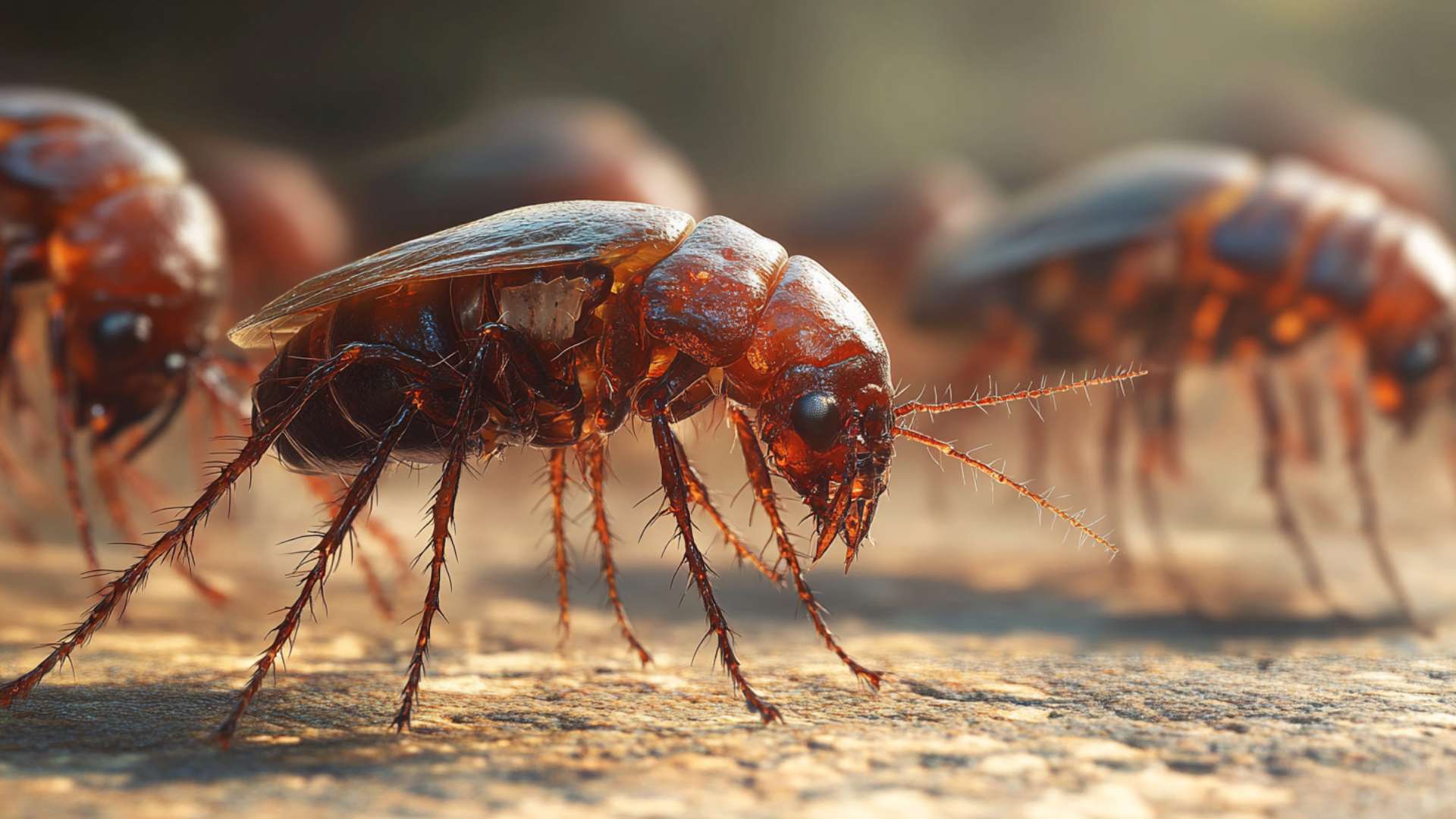Fleas, those minuscule yet mighty creatures, are ectoparasites that belong to the order Siphonaptera. These tiny insects have a flattened body, allowing them to effortlessly navigate through the dense fur or feathers of their hosts. Typically measuring between 1 to 4 millimeters in length, fleas are equipped with powerful hind legs built for jumping great distances – an evolutionary adaptation that makes catching them quite a feat.
Common Signs of Flea Infestations in Homes and Pets
Identifying a flea infestation can be an itchy affair for both humans and pets alike. Our furry friends often bear the brunt of these pesky invaders, displaying telltale signs such as excessive scratching or grooming behavior.
If you notice your pet biting or chewing on certain areas with increased frequency, there is a good chance that fleas are making their presence known. But it’s not just our beloved companions who suffer cat fleas; we humans can also fall prey to these bloodsucking critters.
Flea bites on people often manifest as small red bumps accompanied by intense itching and irritation. The bites tend to occur in clusters or linear patterns on exposed skin areas such as ankles and wrists – prime targets for hungry fleas seeking an easy meal.
When it comes to our living spaces, most flea infestations leave behind unmistakable evidence. Keep an eye out for tiny black specks known as “flea dirt” – the excrement left behind by adult fleas after feasting on blood.
You may find this flea dirt on surfaces like bedding, carpets, or upholstery where your pets spend most of their time resting. The presence of flea eggs is another sign pointing towards an infestation of fleas.
These minuscule ovals can be challenging to spot with the naked eye, but if you inspect your pet’s fur or the areas they frequent, you may come across these tiny white pearls. Flea eggs are notorious for their ability to quickly populate an environment, thus exacerbating the infestation if not addressed promptly.
In the next sections, we will delve deeper into the fascinating life cycle of fleas, explore factors contributing to infestations, learn how to identify these persistent pests, and discover effective methods for their extermination. So buckle up and arm yourself with knowledge as we embark on this journey to get rid of ourselves of those bothersome fleas!
What to Do If You Have a Flea Infestation? Taking Action Against Fleas
If you’re facing the frustrating challenge of a flea infestation, it’s crucial to know what to do if you have a flea infestation. Explore effective strategies to identify, control, and eliminate fleas from your living spaces. From pet treatments to home remedies, we’ve got you covered in your battle against these pesky pests.
How to Get Rid of Fleas in Your Home: A Comprehensive Guide
Discover a step-by-step approach on how to get rid of fleas in your home. From thorough cleaning routines to targeted treatments, this guide provides insights into eradicating fleas and preventing their return. Take control of your living environment and ensure a flea-free home for your family and pets.
How to Eliminate Fleas from Your Yard: Outdoor Flea Control
Fleas aren’t just an indoor problem; they can infest your yard too. Learn effective methods on how to eliminate fleas from your yard to create a comfortable outdoor space. From natural remedies to professional treatments, explore solutions that keep your yard free from flea infestations.
When to Call an Exterminator for Fleas: Professional Flea Control
In some cases, tackling fleas requires professional expertise. Understand when to call an exterminator for fleas and the benefits of seeking professional flea control services. Explore the signs that indicate it’s time to bring in the experts to ensure a thorough and effective flea eradication.
How to Prevent Flea Infestations: Proactive Flea Control Measures
Prevention is key when it comes to fleas. Learn how to prevent flea infestations with proactive measures that safeguard your home and pets. From regular pet treatments to maintaining a clean living environment, discover strategies to keep fleas at bay.
Flea Control for Outdoor Areas and Yards: Enjoying a Flea-Free Environment
Create a flea-free outdoor space with effective flea control for outdoor areas and yards. Explore methods to protect your lawn, garden, and outdoor living spaces from flea infestations. Enjoy the great outdoors without the nuisance of these biting pests.
Understanding Flea Life Cycle
Overview of the Four Stages: Egg, Larva, Pupa, and Adult
Fleas may be tiny, but they certainly pack a punch when it comes to reproduction. To effectively combat and control flea infestations, it’s crucial to understand their life cycle.
Their life cycle consists of four distinct stages: egg, larva, pupa, and adult. The first stage begins with the female flea laying eggs on your pet’s fur or in their bedding.
On average, a female flea can lay up to 50 eggs per day. These minuscule white ovals are usually about 0.5 millimeters long and are barely visible to the naked eye.
They tend to fall off your pet onto surfaces like carpets or furniture where they serve as breeding grounds for future generations. Once the eggs hatch into larvae within a span of one to twelve days, they enter the second stage of their life cycle.
The larvae resemble tiny caterpillars with whitish bodies and no legs. They predominantly feed on organic debris found in the environment such as dried blood excreted by adult fleas and their feces.
After about five to twenty days of feeding on this organic matter, the flea larvae spin cocoons around themselves entering into the pupal stage—the third stage of their life cycle. Within these cocoons known as flea pupae, major transformations take place as they develop into adults.
Emerges the fully formed adult fleas from within these protective cocoons—an outcome that is highly influenced by factors such as temperature and humidity levels in your home environment. This fourth and final stage typically lasts for several weeks before new adults emerge from their cozy cocoons ready for another round of reproduction.
Duration of Each Stage and Factors Affecting Their Development
The duration of each stage in a flea’s life cycle can vary depending on various factors. Eggs, for instance, usually take two days to two weeks to hatch.
However, environmental factors like temperature and humidity play a significant role in speeding up or slowing down this process. Warm and humid conditions create the perfect breeding ground for fleas, resulting in accelerated hatching times.
Larvae typically remain in this stage for about four to eighteen days, again influenced by environmental conditions. High temperatures and humidity levels promote faster development, while lower temperatures slow it down.
During this stage, larvae avoid light and prefer dark areas such as deep carpets or the cracks of wooden floors. The pupal stage is where things get interesting.
Flea pupae possess remarkable survival abilities as they can stay dormant inside their cocoons for several months under unfavorable conditions until the environment becomes more suitable for them to emerge as adults. This ability to “wait it out” makes flea pupae notoriously challenging to eradicate completely.
Factors like vibrations from footsteps or increased carbon dioxide levels signal adult fleas that a potential host is nearby or that environmental conditions are favorable for emergence. Once stimulated, adult fleas break free from their cocoons within 5-30 days.
Understanding the duration of each stage in a flea’s life cycle provides insight into their resilience and adaptability in creating flourishing infestations. Armed with this knowledge, we can implement effective strategies targeting every aspect of the life cycle—ensuring comprehensive flea control measures that will get rid of fleas and our homes of these pesky parasites once and for all.
Factors Contributing to Flea Infestations
Pets as primary hosts for fleas
When it comes to flea infestations, our beloved pets often serve as the main culprits. Cats and dogs, being warm-blooded creatures, offer ideal conditions for fleas to thrive and reproduce.
These tiny parasites latch onto our furry companions, using them as convenient sources of blood meals, and shelter. Therefore, it is crucial for pet owners to take proactive measures in safeguarding their four-legged friends against these pesky invaders.
Importance of regular pet grooming and flea prevention measures
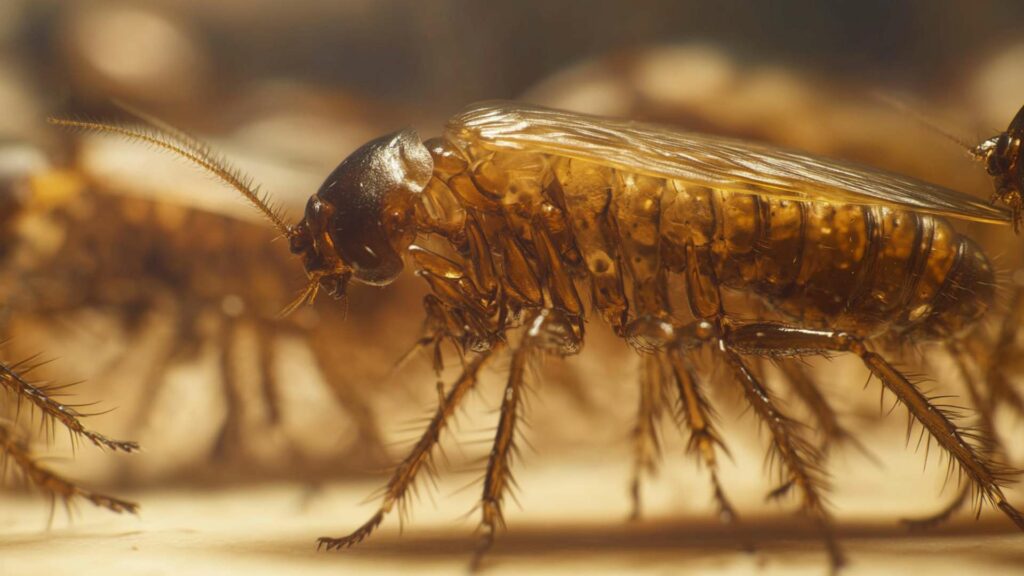
Regular grooming plays a vital role in keeping fleas at bay. Brushing your pets’ fur not only helps in removing adult fleas but also aids in detecting any signs of juvenile fleas infestation early on.
Additionally, maintaining proper hygiene by bathing your pets with specialized, flea shampoo or shampoos can effectively eliminate these unwelcome guests. Furthermore, adhering to recommended flea prevention measures such as spot-on treatments or oral medications prescribed by your veterinarian will go a long way in protecting your pets from potential infestations.
Role of outdoor exposure in bringing fleas inside the house
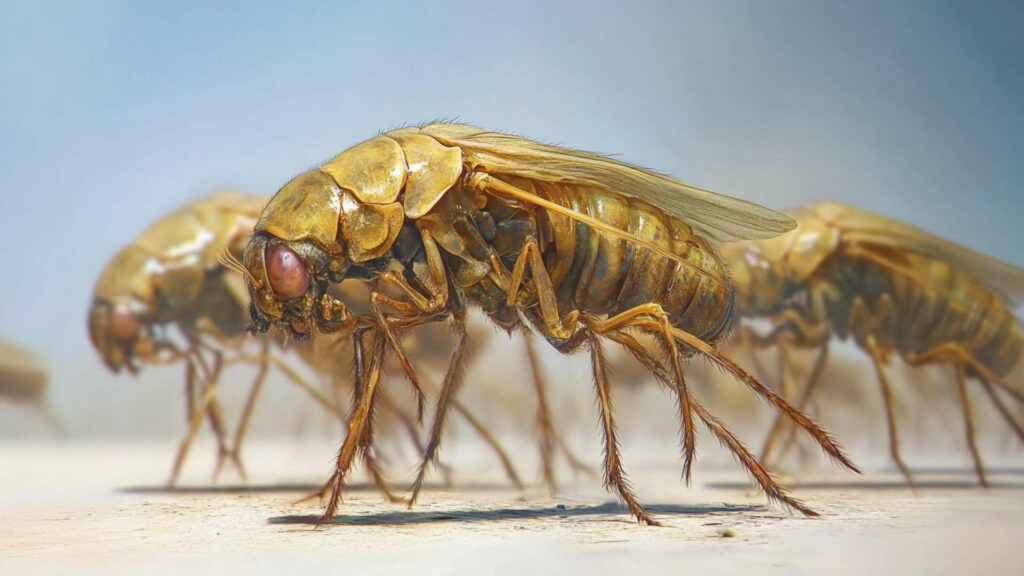
Outdoor exposure is another significant factor contributing to flea infestations within our homes. When our furry friends venture outside, they are exposed to various environments that may harbor fleas—such as grassy areas or other animals carrying these parasites.
Flea eggs or adult fleas can then hitch a ride on our pets’ fur before being unintentionally brought indoors. Hence, it is crucial to be mindful of outdoor activities and consider preventive measures such as regular inspections and appropriate anti-flea treatments after outdoor excursions.
Environmental conditions that favor flea reproduction
Fleas require specific environmental factors conducive to their reproduction and survival within our homes.
Ideal temperature and humidity levels for flea survival
Flea populations flourish in warm and humid conditions. Fleas thrive between temperatures of 70 to 85 degrees Fahrenheit (21 to 29 degrees Celsius) and humidity levels of 70% or higher. These conditions are commonly found during the summer months when flea activity peaks, earning it the notorious title of “flea season.” However, fleas can still survive indoors during colder months if they find suitable hiding places and a source of warmth, such as our homes.
Common hiding places for fleas within homes
To successfully combat a flea infestation, it is essential to understand where these stealthy pests tend to hide within our homes. Fleas have a knack for seeking out dark, secluded areas that provide them with safety and favorable conditions for their life cycle.
Common hiding spots include carpets, pet bedding, upholstered furniture, and even cracks in wooden floors. It’s crucial to thoroughly clean these areas by using a vacuum cleaner on carpets and upholstery while also incorporating steam cleaning or hot water washing methods whenever possible.
By understanding the factors contributing to flea infestations—such as pets serving as primary hosts, the importance of regular grooming and prevention measures for our furry companions, the role of outdoor exposure in bringing fleas indoors, as well as the environmental conditions favoring their reproduction—we can take proactive steps towards preventing these persistent invaders from taking over our homes. Remember that diligence in pet care and maintaining a clean living environment are key elements in keeping fleas at bay.
Identifying Flea Infestations
Recognizing flea bites on humans and pets
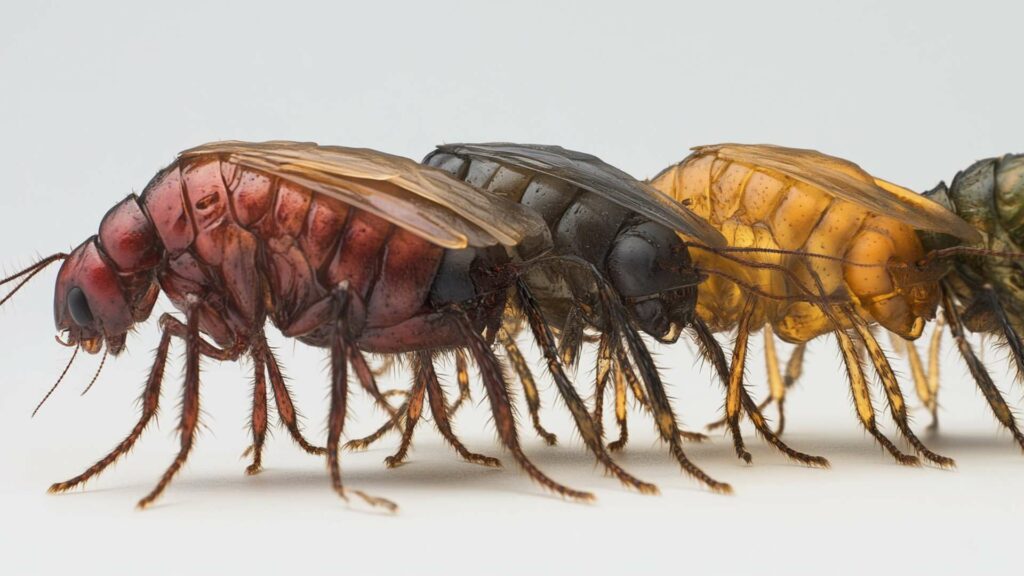
One of the first indications of a flea infestation is the presence of itchy, red bites on both humans and pets. These bites are usually small, raised bumps that tend to cluster in groups or lines.
It’s important to note that fleas bite people and animals primarily on areas with thin skin, such as ankles, wrists, armpits, and groin. If you notice multiple itchy bites appearing in these areas, it’s likely that you are dealing with fleas.
Characteristics of flea bites (itchiness, redness, etc.)
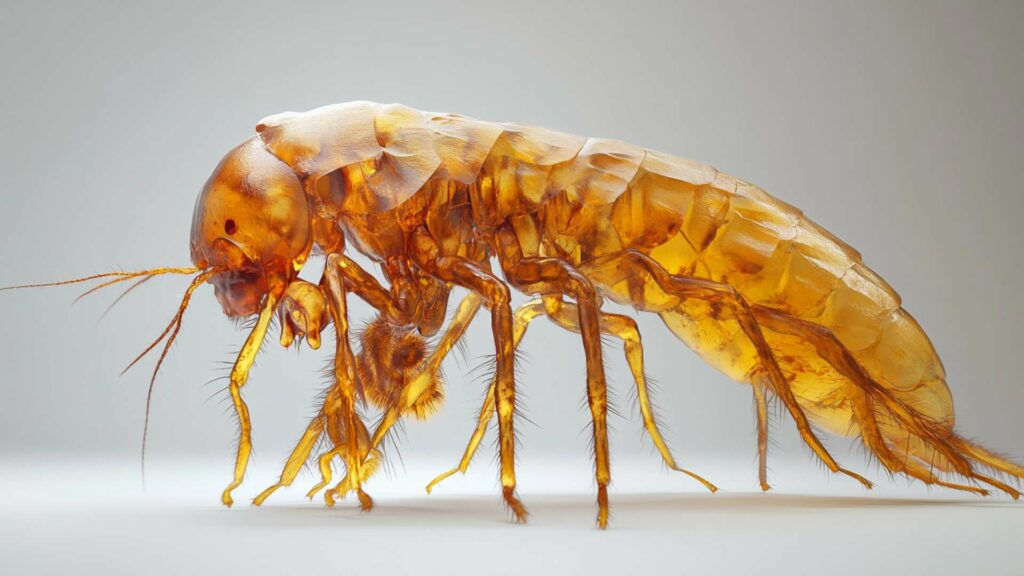
Flea bites are notorious for causing intense itching due to the saliva injected into the skin during feeding. The reaction to flea bites can vary from person to person; some may experience mild itching while others may develop severe allergic reactions.
The affected area typically becomes inflamed and reddened due to histamine release triggered by the bite. Scratching these bites excessively can lead to secondary infections.
Distinguishing flea bites from other insect bites or skin conditions
Differentiating flea bites from other insect bites or skin conditions can be challenging but not impossible. Unlike mosquito or bed bug bites that usually appear as singular welts, flea bites often occur in clusters or rows. Additionally, if you observe tiny dark specks resembling pepper on your pet’s bedding or furniture upholstery known as “flea dirt,” this is a strong indication of a flea infestation.
Conducting a thorough inspection for fleas
Areas to check: pet bedding, carpets, furniture, etc.
To effectively identify a flea infestation within your home, it is crucial to thoroughly inspect various areas where fleas tend to hide and reproduce. Start by examining your pet’s bedding, as fleas often seek refuge in soft materials.
Carpets, especially in areas frequented by pets, are prime locations for flea eggs and larvae. Don’t forget to inspect furniture, particularly cushions, and upholstery where fleas can easily hide undetected.
Using a fine-toothed comb to detect fleas on pets’ fur
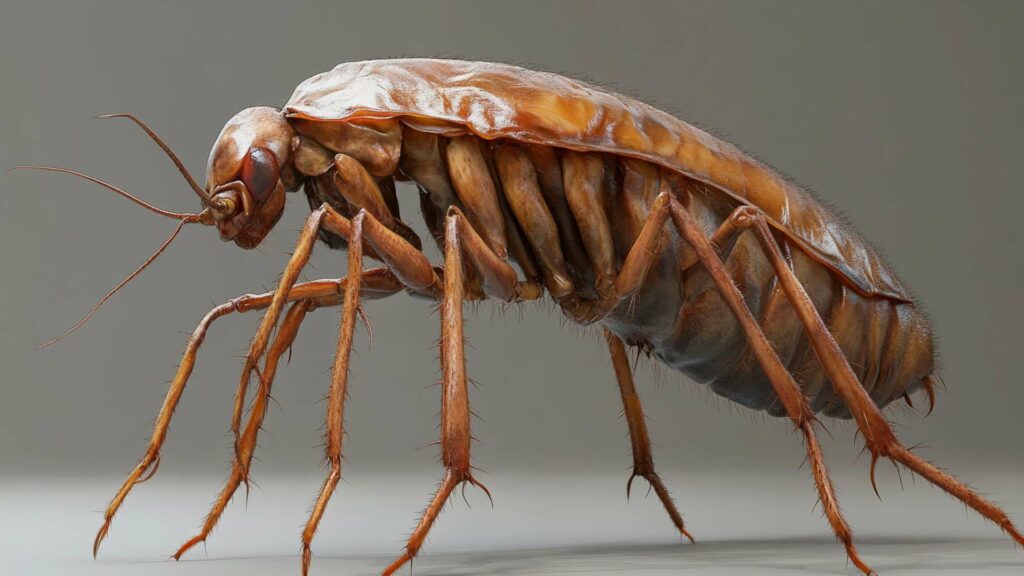
Your pet’s fur provides an optimal breeding ground for fleas. To check for the presence of these pesky insects, use a fine-toothed flea comb designed to catch fleas and their eggs. Start combing near the base of your pet’s fur and move slowly in the opposite direction of hair growth.
Pay close attention to areas behind the ears, under the armpits, and around the tail base where fleas tend to congregate. Regularly vacuuming your home is vital in controlling the flea population.
After vacuuming carpets, dispose of the bag immediately in a sealed plastic bag outside your home to prevent mature fleas lay eggs from escaping back into your living space. Washing your pet’s bedding at high temperatures with hot water kills adult fleas and their eggs effectively.
By accurately recognizing flea bites on humans and pets and conducting thorough inspections of potential hiding spots, you can promptly identify a flea infestation. Taking proactive measures to treat fleas, such as regular vacuuming and using a flea comb on your pet’s fur will aid in managing these unwelcome guests effectively.
Effective Extermination Methods
Treating pets for fleas
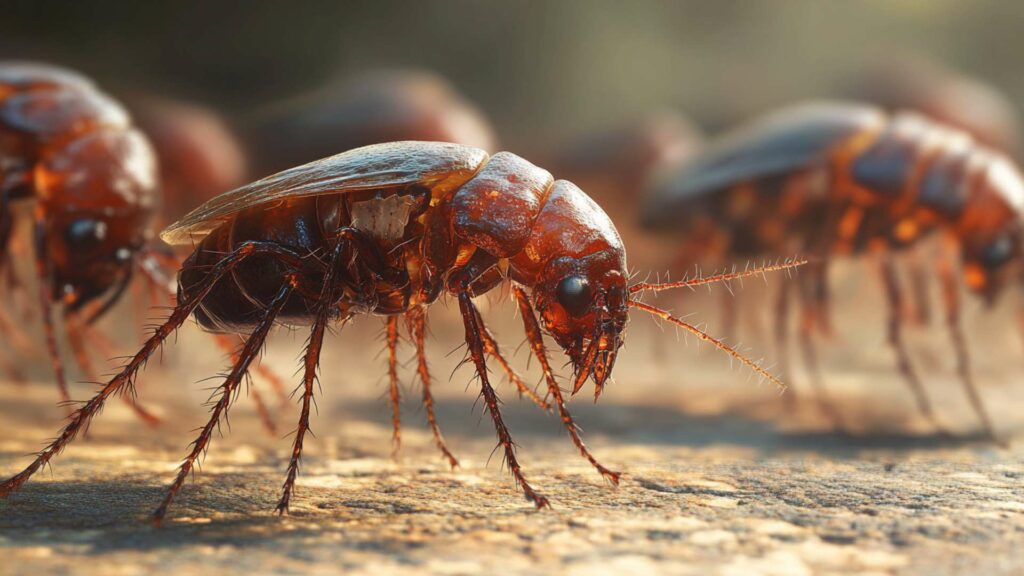
Different types of topical treatments available (spot-on treatments, shampoos)
When it comes to tackling a flea infestation on your furry friend, there are several effective options available. Spot-on treatments are popular choices and come in convenient vials that can be easily applied between your pet’s shoulder blades.
These treatments contain chemicals that kill adult fleas upon contact and often provide protection for up to a month. Shampoos formulated specifically for flea treatment are another option.
These shampoos not only cleanse your pet’s coat but also contain ingredients that kill fleas on contact. Make sure to follow the instructions on the spray bottle and carefully and thoroughly rinse your pet after shampooing.
Oral medications for long-term prevention
To combat fleas in the long run, oral medications can be a great choice.
These medications are prescribed by veterinarians and work by releasing chemicals into your pet’s bloodstream that prevent flea reproduction or kill adult fleas when they bite your furry friend. They offer convenience as you don’t have to worry about topical applications or bathing routines, making them ideal for pets who dislike baths or have skin sensitivities.
Eliminating fleas from the environment
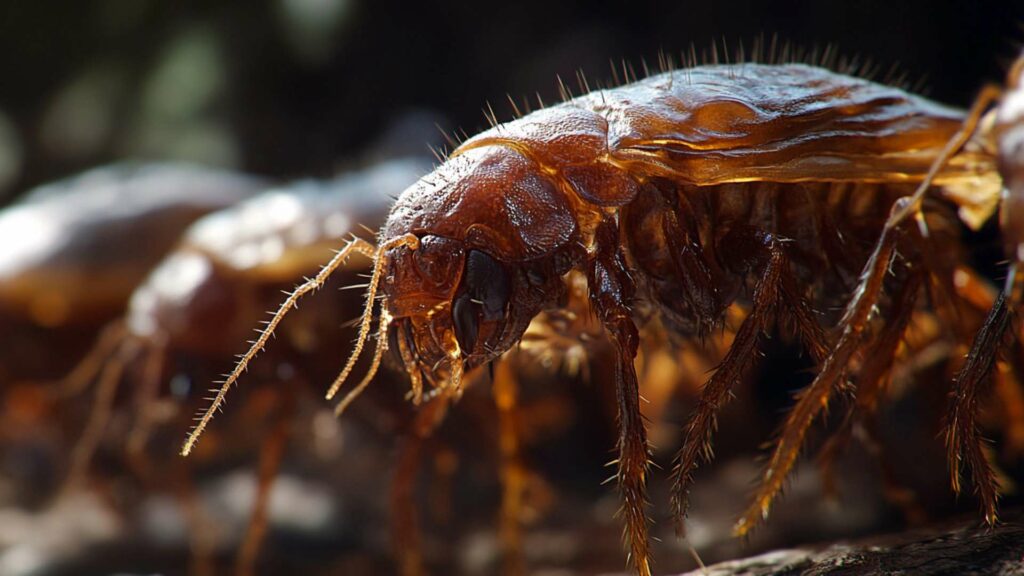
Vacuuming regularly to remove eggs and larvae
To effectively minimize the population of pesky fleas present in your home, regular vacuuming is crucial. Flea eggs and larvae tend to accumulate on carpets, upholstery, and other soft surfaces where pets frequently lie down or spend time playing.
By vacuuming these areas thoroughly at least once a week with a high-efficiency particulate air (HEPA) filter vacuum cleaner, you can physically remove a significant amount of eggs and larvae from these breeding grounds.
Washing bedding at high temperatures
Another step towards killing fleas and creating a flea-free environment is to wash your pet’s bedding regularly in hot water. Fleas and their eggs cannot survive the high temperatures, so washing the bedding at 140°F (60°C) or above can effectively eliminate them.
Adding a small amount of dish soap to the wash cycle can enhance the flea-killing power. Remember to dry the bedding on high heat as well, as this will further eliminate any lingering fleas or eggs.
Conclusion
In the battle against fleas, implementing an effective combination of treatments for both your pets and their environment is key. Treating your furry friend with topical solutions or oral medications will help tackle existing flea infestations and prevent future ones by targeting adult fleas and interrupting their reproductive cycle. Simultaneously, eliminating fleas from your living space through regular vacuuming and hot water washing of bedding will significantly reduce their numbers.
By following these methods consistently and maintaining a clean environment, you can ensure a more comfortable and flea-free home for both you and your beloved pets. Remember, with determination, diligence, and proper care, you can triumph over those pesky fleas!
Frequently Asked Questions:
To address a severe flea infestation, vacuum thoroughly, use flea sprays, and consider professional pest control.
Hiring an exterminator can be worth it for severe flea infestations, providing expertise and more potent treatments.
Fleas can diminish after an exterminator’s intervention, but follow-up measures may be needed.
Exterminators use various methods such as insecticides, IGRs (Insect Growth Regulators), and steam treatments to kill fleas.

